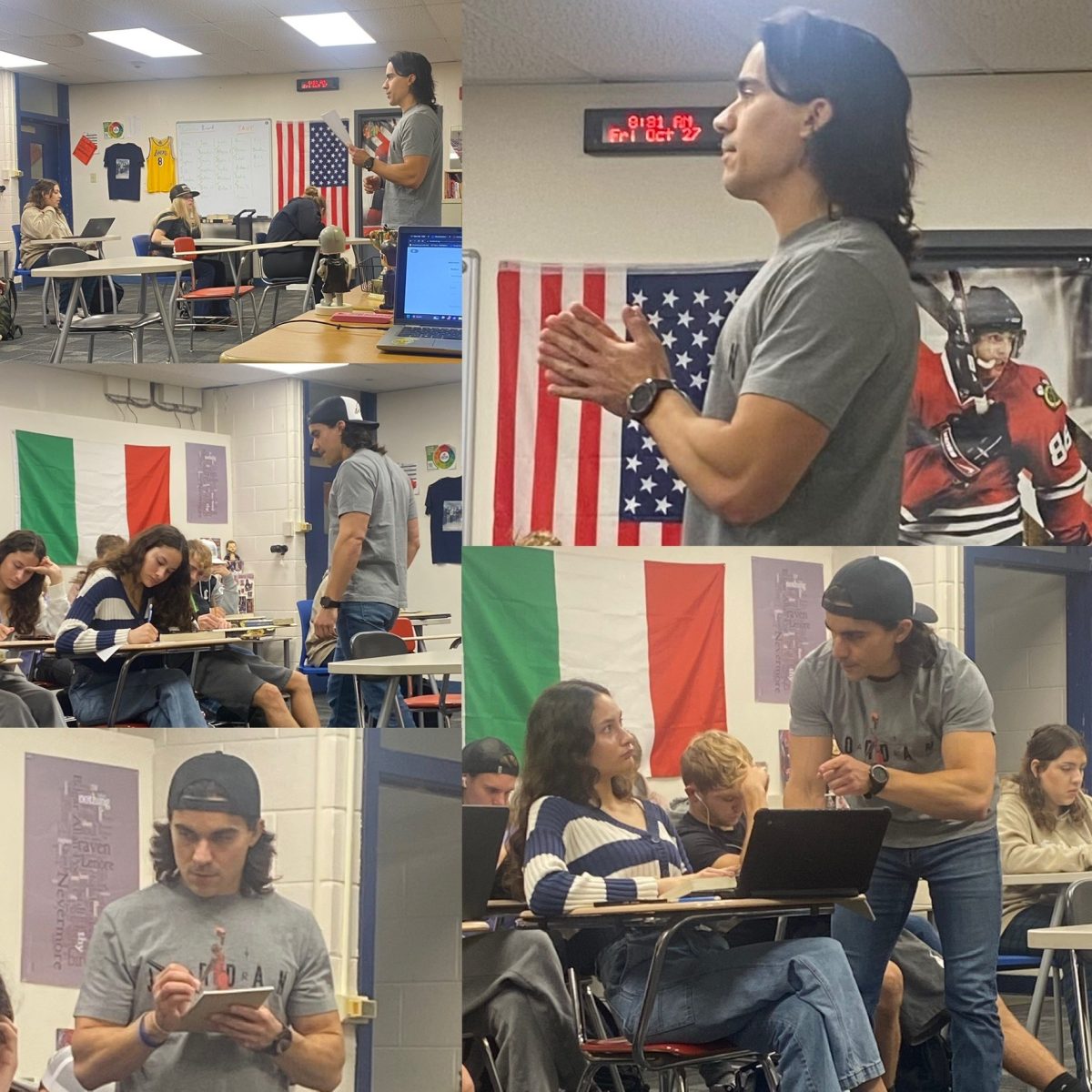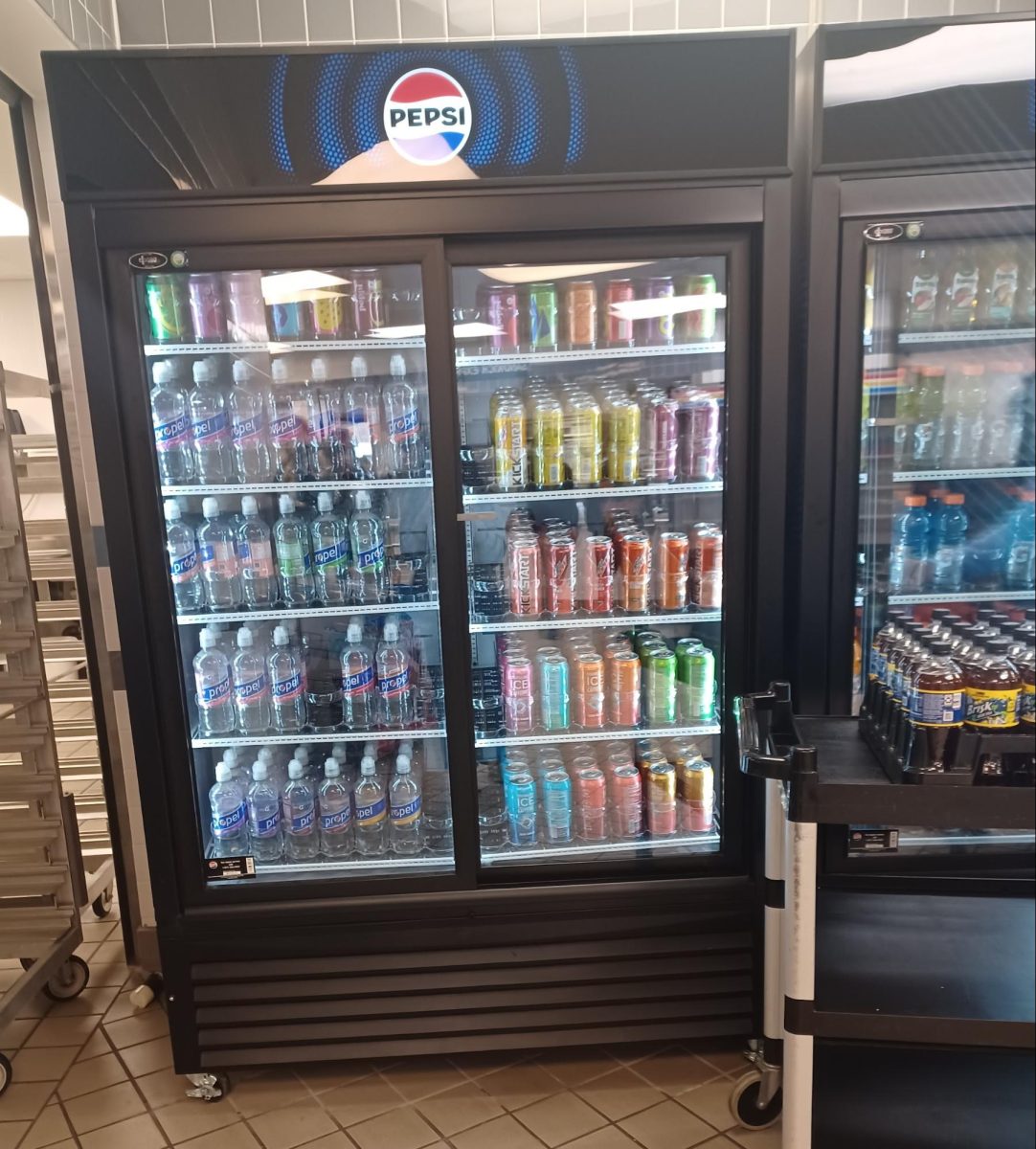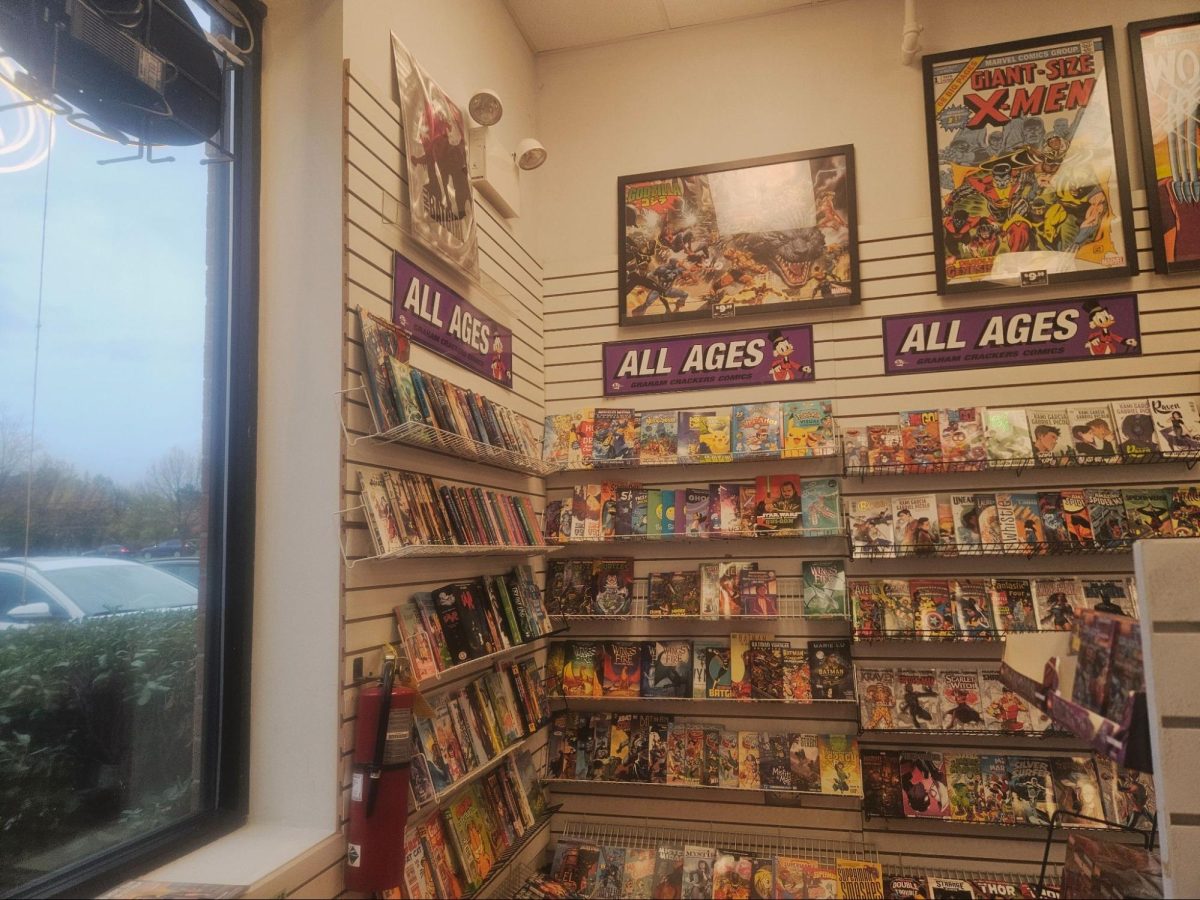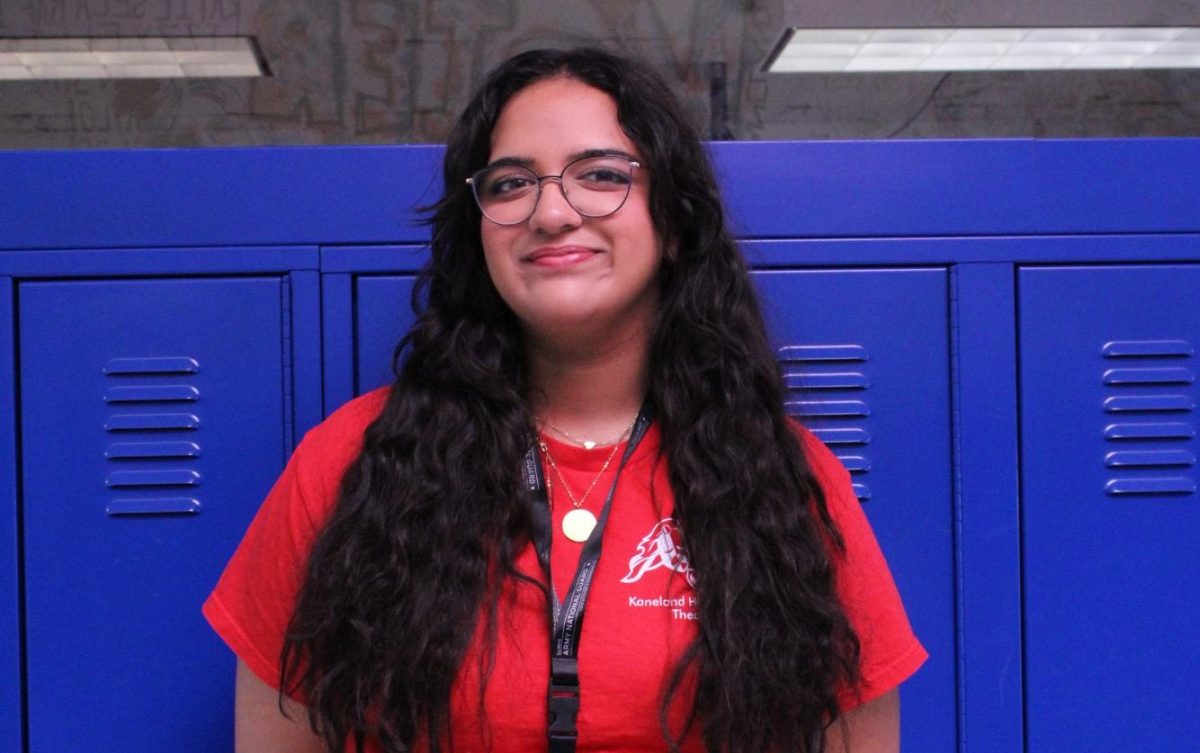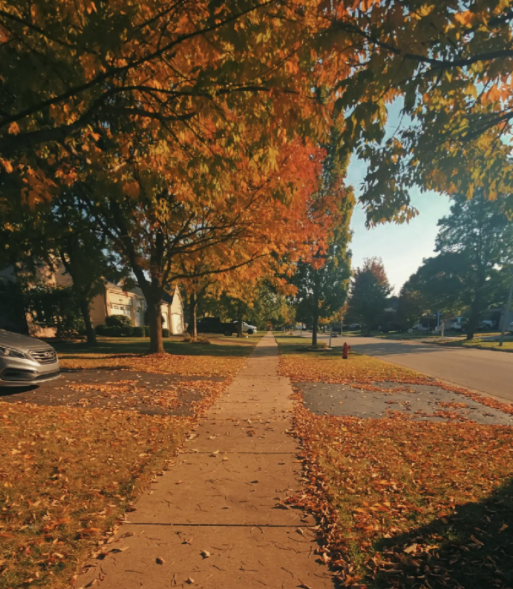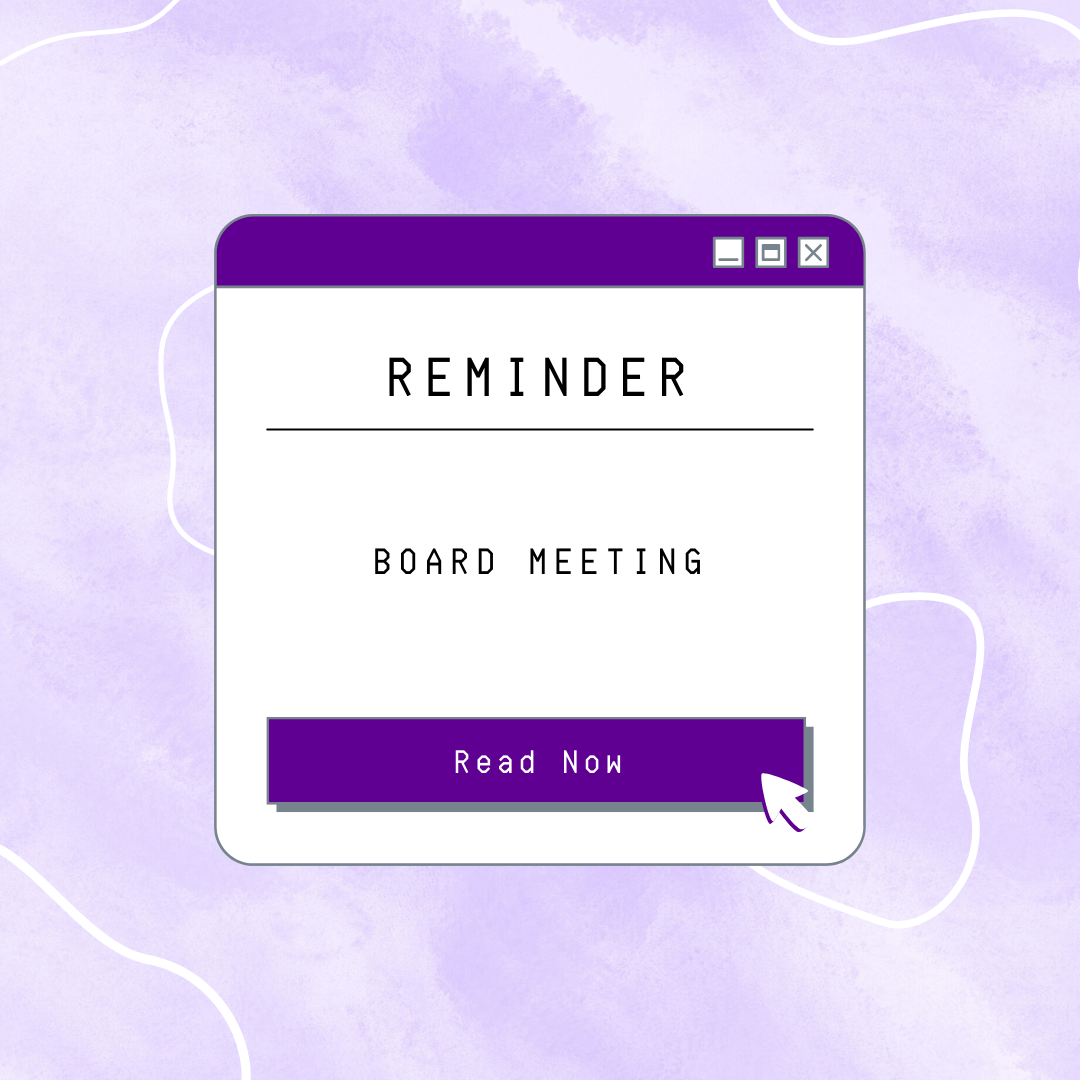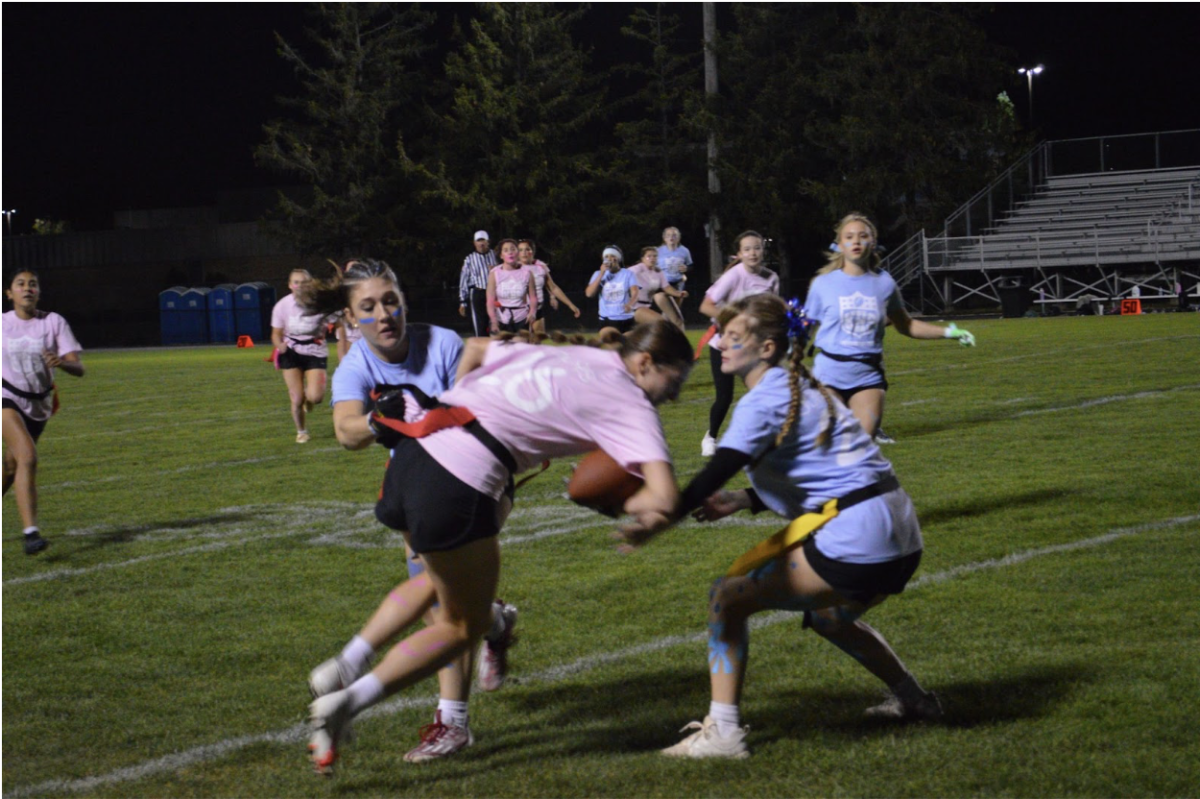Being a teacher is not a profession that just any person can successfully pursue. It takes time, dedication, patience and a love for helping others. I wanted to see what a typical day for a teacher was like, so I spent a day with Michael Cimino, an English teacher at Kaneland High School. He teaches Communications Studies, a class that is a graduation requirement that prepares students for life after high school with mandated speeches and other public speaking content. He also teaches two senior-level English classes: Contemporary Literature and Advanced Composition.
“The reason I wanted to be a teacher was to establish relationships [and help] kids,” Cimino said. “I had a few teachers that I still have a relationship with to this day. [It] was my motivation to become a teacher because I loved my own school experience. I saw what those teachers did for me, and I knew that I wanted to work with kids in some form or fashion.”
Along with wanting to work with kids, he also became a teacher because of the environment.
“I didn’t want to do a desk job. People who just sit behind a desk, work from home or run meetings, that was never my style,” Cimino said.
Waking up early in the morning is definitely not for everyone, as some people dread that early alarm. However, others don’t dread this task.
Cimino claims to not be a morning person. He says he has always been like that, even as a kid. He typically wakes up later than he should and starts the day with a shower to wake him up. He eats a light breakfast and heads to work.
Cimino’s first period is his prep. Prep periods are given to teachers to prepare for their classes for the day. This can consist of printing, grading or even using that time to help students if needed. Cimino spends the first part of the period standing in the hallway with journalism adviser Dominic Bruno. While in the hallway, they talk about the things they will do that day, along with any other random topics on their minds.
After the bell rings, Cimino moves back into his room to teach his first Contemporary Literature class. Contemporary Literature is an English course where students read, analyze and create projects on books they read. When I spent the day with Cimino, they were reading A Man Called Ove by Fredrik Backman. Cimino walks around, discusses the book with students and allows them to ask questions as needed.
At the high school, third hour is designated as a homeroom for all students. Students are allowed to go to other classrooms on Tuesdays, Thursdays and Fridays. On Mondays, homeroom is used for social-emotional learning (SEL) lessons. Most SEL lessons pertain to mental health strategies on how to deal with stress or anxiety around school. Others include certain communication skills, preparing for the future and how to spread positivity and kindness to others. Cimino has a sophomore-level homeroom.
Cimino’s fourth hour class is his first Communication Studies period. Lone Star College (LSC), a community college in Harris County, TX, provides a speech department so they can equip students with communication skills and can benefit greatly from taking some kind of Communication Studies course. According to LSC, that can happen in university, community college or high school.
“Communication Studies provides essential skills for enacting and defending your rights in our society. Whether it’s critical thinking training, public speaking, organizing groups, or simply telling your own story, students need communication training to make a positive difference in our world,” according to LSC’s website.
Cimino gave his students time to prepare their speeches for the first 10 minutes of class. Students spent the rest of the time giving their speeches. The type of speeches given were “old school” (or traditional) speeches. These can consist of teaching a lesson or demonstration, introducing a specific career or giving general information on a topic. Students are required to give three oral citations when presenting their speech. This is done by verbally stating at least three sources that the student used as information to create their speech. Some of the speeches students gave included demonstrations on making edible cookie dough, Oreo milkshakes and YouTube thumbnails.
Fifth hour is Cimino’s lunch period. He likes to eat his lunch wherever he can, but he tends to eat his lunch in Bruno’s room, B109.
Also in B109 is his sixth hour study hall, where students enrolled are given time to work on assignments from other classes. Cimino also uses this time to grade, prepare for his later class and just take a break from teaching. During these two periods, Cimino’s room is used for other classes.
Cimino’s seventh hour is his second English course of the day: Advanced Composition. In this course, students write essays about a variety of things, like movies on the day I observed him. This class was working on practice movie review essays while Cimino conferenced with students in his back room.
According to Donna Shrum, a teacher and writer for the Association for Supervision and Curriculum Development (ASCD), there are multiple benefits to working with students one-on-one and counseling with them privately. Some of these benefits include students learning how to expect more of themselves, the ability to receive constant, timely feedback and building better teacher-student relationships.
“It can also be difficult to stop blaming others or external circumstances for past failures. Conferencing allows each student an equal opportunity to enter learning confidently and ask for any necessary help, as well as gaining the teacher’s realistic assessment of their abilities,” Shrum said.
Eighth hour is Cimino’s second Communication Studies class. This class is much bigger than his first, and in his own words, they tend to be less on task.
“It’s fun to have three classes in a row. It keeps you busy and engaged…It’s fun because I love teaching. But it can also be the worst part of the day if kids are less inclined to pay attention later in the day, after lunch or if it’s a Friday, ” Cimino said.
Cimino has to go through this struggle of trying to keep his students engaged. During the eighth-hour Communication Studies period, students were giving traditional speeches. To keep students engaged in the speeches, Cimino has a part of his rubric for students reminding them that they must be respectful and engaged during other speeches. Doing so keeps students quiet and allows concentration for himself to grade and keeps the class engaged and focused.
Ninth hour, the last period of the day, is his second Contemporary Literature class. These students also learned about analysis strategies and were given time to read their designated book.
During the winter season, Cimino is the varsity girls assistant basketball coach. So he goes from teaching to coaching. In the off-season, Cimino has many things he enjoys after school.
“I always look at work stuff later than I should. When I get home, I’ll go to the gym or relax for a little bit, eat dinner and stop by my parents’ or brother’s [house]. So I’m not really looking at school stuff until 7-8 p.m. Then, I’ll do that on and off until 9-10 p.m, depending on how much I have to do,” Cimino said.
Being a teacher is not an easy task. They have to teach students new subjects, support them academically and sometimes emotionally, and work long days. Cimino’s drive to continue to grow, to work with his students one-on-one and to form relationships with them, is what makes him such a great teacher.
Many teachers are underappreciated and deserve more recognition. Seeing the day in the life of a Kaneland teacher has opened a window into what being a part of that profession really means. This has changed my perspective on all teachers in terms of how truly important and vital their role is in a healthy relationship with education and it will hopefully do the same for others.


